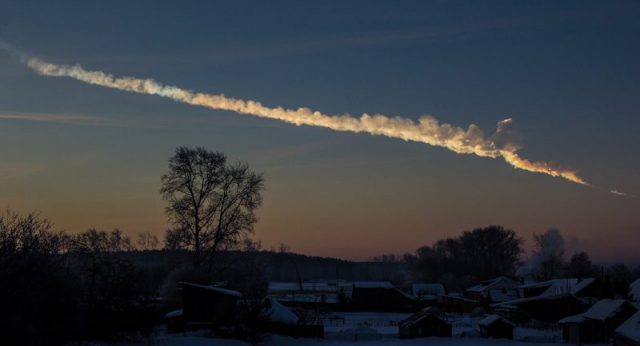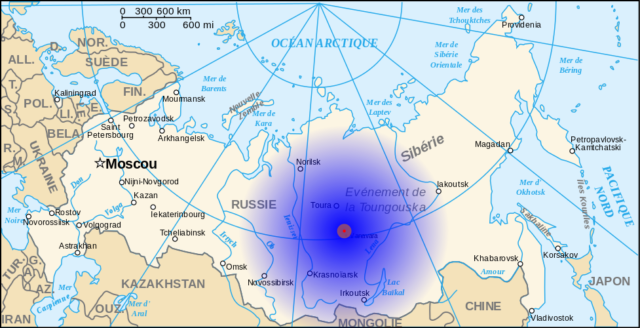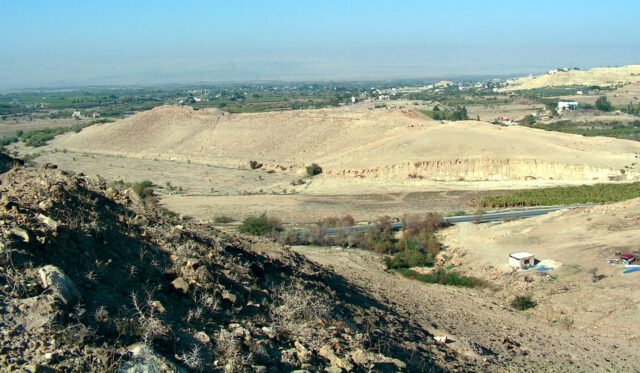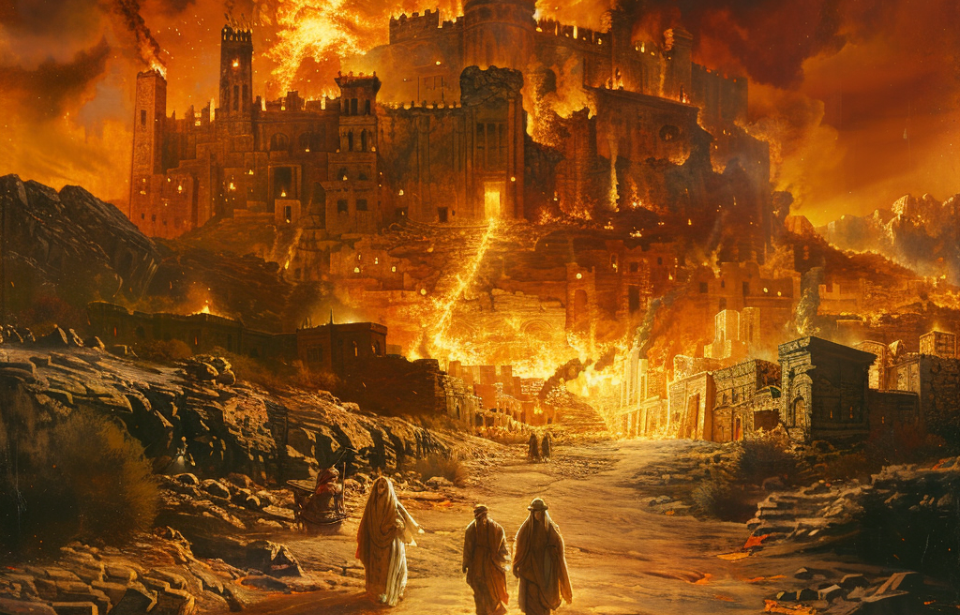In November 2018, Phillip Silvia, Ph.D. of Trinity Southwest University in New Mexico, made a presentation to the American Schools of Oriental Research in which he put forth the theory that the ancient city of Sodom was destroyed by a giant meteor, not by angels sent from God, as explained in Genesis 19. Silvia is an engineer, archaeologist, and theologian and was able to reach this conclusion from a variety of angles. Sodom, of course, was reputed to have been a den of iniquity – not even Las Vegas could rival Sodom in the amount of Old Testament-type sin going on there.
The Chelyabinsk meteor

On February 15, 2013, a meteor exploded in the area of Chelyabinsk, Russia, a city of over one million people in the southern Ural Mountains. For a moment brighter than the sun in the sky, the meteor was a literal fireball, scientifically called a “superbolide,” and entered the atmosphere at an estimated 40,000 miles per hour. Though it looked like it exploded much lower, the fireball blew up at a height of 18.5 miles. It pushed a cloud of atmospheric gas and dust to a height of 16 miles. Many meteorites survived the blast and fell to Earth.
What most people remember is the giant shock wave, which resulted both in a huge sound, and vibrations that blew out windows in some 7,200 buildings in the region and caused over 1,000 people to seek medical attention due to injuries sustained from the breaking glass. Scientists estimate that the energy released from the object on its entire trip through space and into the upper atmosphere was 26-33 times the power of the Hiroshima atomic bomb. The meteor itself was estimated at 56 feet across and 10,000 tons before it broke up.
Was the destruction of Sodom like the Tunguska event

Another famous event also took place in Siberia. This was the “Tunguska event,” in which a meteor approximately six times the size of the Chelyabinsk meteor hit the Earth. Because of the sparsely populated nature of Siberia then (and now), there were no known casualties, but if the object had exploded over New York, the city would have experienced the power of 1,000 Hiroshima bombs.
This is what Dr. Silvia believes happened to Sodom. He posits that a meteor exploded in the air above the Middle East and created a circle-shaped plain on the northeastern edge of the Dead Sea, an area called Middle Ghor, in today’s Jordan.
According to Silvia, the area of Middle Ghor had been settled for about 2,500 years before the Bronze Age (2000-500 BC). Excavations carried out in the area at five different sites illustrate this. Another further 120 sites have been surveyed in the area. He and others of his team believe that the Middle Ghor region was the home of the ancient city (or city-state) of Sodom.
Analyzing the ruins of the city of Tall el-Hammam

The most telling archaeological feature of the area are the ruins of the city of Tall el-Hammam. Silvia and colleagues, led by Dr. Steven Collins, have been excavating the site for 13 years, and what they have found, they say, indicates evidence of a gigantic low-altitude airburst meteor of the Chelyabinsk/Tunguska type.
They believe they have found ample evidence to suggest that the site was Sodom. Firstly, they say they have found pottery shards depicting sexual relations between men and boys. Tall el-Hammam is also the largest city of the region, and in the Bible, Sodom is one of the “cities of the plain” mentioned by name. Tall el-Hammam covers one hundred acres. Jericho covered ten. Ancient Jerusalem ten as well. The Bible says that Sodom had a large defensive wall, and Tall el-Hammam has one made up of an estimated 60-90 million bricks: eight meters thick at the top, forty at the bottom.
Geological descriptions and words found in the Bible match Tall el-Hammam. The location was abandoned for about 700 years, in the middle of one of the centers of world civilization at the time, and a fertile one, at that. This suggests, says Silvia and his colleagues, that people were sufficiently awed by what happened that they stayed away for centuries.
But what about the “pillars of salt”

What could have awed them, and what could have turned (as the Bible says), Lot’s wife into a “pillar of salt,” and caused a flaming vortex such as that mentioned in Genesis 19? A huge meteor. The pottery mentioned above? The outer parts are turned into glass. The rock walls disappeared suddenly 3,700 years ago, according to carbon dating of their foundations, the only parts left. Lot’s family would have made their way along the shore of the Dead Sea, one of the saltiest bodies of water in the world.
They were under instructions from God’s angels not to look back at the city unless they wanted to be turned into “pillars of salt.” Should Lot’s wife have had second thoughts, or should her “look back” have amounted to more than just a peek (perhaps a long stop to make sure she was making the right decision, looking back to get one more glimpse of home for her memory, or just out of curiosity), and if that is the case and the meteor exploded over the Dead Sea, she might indeed have been covered in boiling salt water, or gas. If some of the sea breached its shores as a result of the explosion, salt would have covered the entire landscape – making it uninhabitable.
Further scientific research indicates that the topsoil near Tall el-Hammam shows that the topsoil of the time was severely disrupted and that the subsoil revealed below was contaminated with salt, making the land decidedly sterile. This could have been another reason people stayed away for so long.
For those skeptical that something from the sky could have wiped out the city, the team, led by Silvia and Dr. Collins believe the event which they call “3.7KYrBP Kikkar” was large, but not the size of the Tunguska event of 1908.
Read another story from us: Rock used as a Doorstop for 30 Years Turns out to be Valuable Meteorite
It’s happened before, it might happen again – that’s why the U.S. government and others have spent billions of dollars for programs which can predict, and hopefully destroy, any dangerous objects hurtling towards Earth from outer space.
By the way, the Chelyabinsk event? No one saw it coming.
